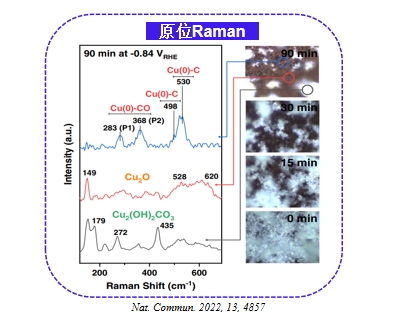- Mass Spectrometry for Energy Transformation and Astrochemistry
- Extreme Ultraviolet Electronic Structure Characterization and Lithography
- Electronic Structure Characterization for Operando Micro/Nano Devices
- High-sensitive, Space-Resolved and Time-Resolved Electron Spin Dynamics
- In-situ/Operando Soft X-ray Spectroscopy and Scattering
- Soft X-ray Ptychographic Nanoscopy
- Resonant Coherent Scattering
- High Throughput In-situ/Operando Tender X-ray Spectroscopy
- Tender X-ray Spectromicroscopy and Ptychography
- Test Beamline
Science

Scientific Scope 1: Utilizing Resonant Inelastic X-ray Scattering (RIXS) for in-situ/operando investigations of alkali-ion battery systems enables comprehensive probing of electronic structure evolution during charge-discharge processes. This capability is crucial for tracking dynamic changes in redox-active transition metal centers and oxygen states, providing insights into charge compensation mechanisms and structural stability. Furthermore, it allows for the identification of intermediate phases and the quantification of electronic structure modifications at different states of charge, offering a deeper understanding of degradation pathways. Finally, RIXS is indispensable for resolving the interplay between electronic and structural dynamics in working battery materials, bridging the gap between theoretical predictions and experimental observations of energy storage mechanisms.

Scientific Scope 2: Near-Ambient Pressure X-ray Photoelectron Spectroscopy (NAP-XPS) enables in-situ investigation of reaction gas adsorption mechanisms on model catalyst surfaces under varying pressure conditions. This technique provides atomic-level insights into the dynamic interplay between surface adsorbates and catalytic active sites, revealing pressure-dependent adsorption configurations and reaction intermediates. By monitoring changes in chemical states and binding energies of surface species, NAP-XPS elucidates the influence of pressure on adsorption kinetics and surface coverage. Furthermore, it allows for the identification of critical pressure thresholds that govern catalytic activity and selectivity, offering a comprehensive understanding of the structure-activity relationship in reaction gas adsorption process under realistic operating conditions.

Scientific Scope 3: NAP-XPS employs tunable energies and micro-beams to study material composition and electronic structure across regions and depths, enabling spatial resolution and subsurface insights under near-ambient conditions.

Scientific Scope 4: In-situ RIXS probes photoelectrocatalytic reactions, revealing dynamic electronic changes, reaction intermediates, and charge-lattice interactions, while identifying efficiency and stability factors.

